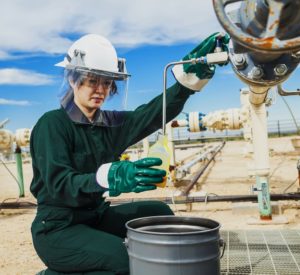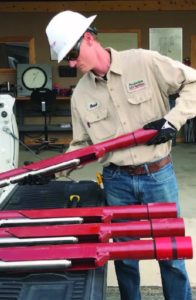 Today’s tumult in the oil and gas industry has begun to break down some of the industry’s historical resistance to change, including change in the realm of artificial lift. Producers are becoming more open to alternatives; not only in types of lift, but also to new ways of thinking about the whole production picture.
Today’s tumult in the oil and gas industry has begun to break down some of the industry’s historical resistance to change, including change in the realm of artificial lift. Producers are becoming more open to alternatives; not only in types of lift, but also to new ways of thinking about the whole production picture.
Clan thinking, wherein each department and each service provider clings to its territory with the ferocity of William Wallace in the Scottish Highlands, is giving ground to a more team-based, results oriented process—a process that promises greater results for companies and for the consuming public.
Baker Hughes’s Production Solutions Global Director / Artificial Lift Systems, Patrick Jackson, was introduced to this concept with Baker Hughes in the mid-1990s. His company, a major ESP provider, signed a performance-based contract with an E&P client in California, with surprisingly strong results. It changed how both parties thought about the process.
“I still get chills thinking about it,” Jackson said, “Working with a customer that is a true partner. We had a common goal. The longer we ran [the ESPs], they more they liked it, the more we liked it.”
He added, “What started out as a modestly acceptable financial package for Baker Hughes turned out to be one of the most successful campaigns I’ve ever been involved with in 39 years in the business.”
About 20 years later, in 2016, Jackson was Operations Manager for ALS for the Southern Geomarket in the United States with Baker Hughes, where he saw the company try that option on a larger scale.
Among the top benefits to the partnership approach is that no one on the customer side is demanding cheaper equipment, sacrificing long-term cost–effectiveness for a few dollars of immediate savings.
Under the 1990s performance contract, the provider used a tandem seal instead of the usually-requested single seal on the ESP. Second, they installed abrasion-resistant technology—tungsten-carbide AR bearings—to deal with sand issues. Third, they upgraded the power cable. The resulting increased pump life and greater production levels made everyone involved in the equation happy.
In the current Baker Hughes situation, the Production Systems model creates a partnership between artificial lift and chemical divisions. This is due to Jackson’s observation that improper chemical treatments—wrong amounts or wrong formulas—contribute approximately 20-30 percent of pump failures, or even more.
Jackson boils lift problems down to two simple issues: “You put the wrong equipment in, number one, and, number two, you don’t operate it right.”
In a five-year trial of this partnership, the company reports an 87 percent reduction in chemical-related ESP failures.
With the trend toward commoditization and assembly-lining oil and gas production, Jackson said his company realizes this is a counter trend, but one that is paying off for those involved.
He also notes that the Permian Basin is the company’s U.S. hot spot for activity, referring to it as “Mecca—for North America, that’s Mecca.”
Performance based contracts must be written fairly and they must involve clients who also view the vendor as a true partner. “You have to have people on both sides of the table willing to work through the gray areas, because gray areas will come up,” he noted.
For the vendor, the partnership process begins by identifying the client’s pain points. If, for example, the client wants longer run life for ESPs, a vendor like Baker Hughes can analyze pump failures in a sort of autopsy, to discover what has contributed to pump failures.
If the cause is determined to be chemical amounts or types, “The foundation has to be a solid understanding of the problem,” said Jackson, “and a mutual agreement on the nature of the problem. Until you have an agreement on the problem, you won’t have agreement on the solution.”
Even with this communication, some decisions may turn out to need rethinking. These situations require further communication and mutual trust, in which the vendor “earns the business every day,” said Jackson.
This may be challenged by “silos” wherein certain departments balk at sharing the information and decision-making process with anyone outside their company or even their group. Jackson sees these silos beginning to break down as more people understand the larger picture of maximizing producing while reducing costs as appropriate.
Addressing the right people and helping them see the benefits of teamwork is part of the process, he observed.
For Jackson, “When somebody asks me what I do, I say, ‘I try to maximize lift performance,’ and they say, ‘What?’” The concept is different from talking about selling ESPs, chemicals, or a specific type or amount of product.
Getting the correct—and complete—well data for determining the size and type of pump and completion is critical as well.
Regarding contract fairness, as alluded to above, setting up an equitable payment is the final piece of the contract puzzle. Instead of basing payment simply on amount of equipment or product sold, it may be based on amount of production, amount of increase, a percentage of cost savings, or other factors. It is also up to the vendor then to spread it out internally between departments such as ESP, chemicals, or others.
Interdepartmental thinking is not the only realm showing signs of changing. Decisions on types of lift appropriate for each well are more and more subject to what works for the well, the field, and the formation than the “we’ve always done it this way” mantra.
PROLIFTCO’s President, Mike Swihart, notes that a “big reason” for the new openness is the changing staff demographics. “We’ve got younger people that are coming in and they’re a little more open-minded. They’re willing to look at a little bit of everything instead of having predetermined what they’re going to do.”
The company’s focus is on plunger lift, gas lift, plunger-assisted gas lift (PAGL), and gas-assisted plunger lift (GAPL). In recent years more producers are using gas lift from the beginning instead of just late in a well’s life “and that has really changed the dynamics in the Permian,” Swihart said.
Historically a liquid-focused region, where natural gas was simply a nuisance to be flared or sold off like an unwanted stepchild, higher gas prices and environmental issues have forced a new mentality. This makes gas lift a more inviting option.
Also, the gas-to-liquids ratio (GLR) climbs as wells mature, causing them to behave more like gas wells. This is contrary to how older vertical wells matured, which were amenable to rod pumping almost to the end of their productive life.
Swihart added that wells designed to start with gas lift can continue to use that infrastructure throughout the well’s life whenever possible, sometimes just involving an inexpensive changeover to plunger lift. “They’ve already spent a lot of up-front money on this infrastructure in setting this up. It would be a shame to to clear the plate and say, ‘Now it’s time to rod everything up like we used to.’”
 The change in thinking is led by unconventionals, but Swihart observed that this has led producers to rethink lift methods on all types of wells, to see what really is the best option to maximize production and reduce cost.
The change in thinking is led by unconventionals, but Swihart observed that this has led producers to rethink lift methods on all types of wells, to see what really is the best option to maximize production and reduce cost.
Another economical option, plunger lift, offers the advantage that it often runs without the need for installing a costly electrical grid as would be necessary for rod pumps, which saves in infrastructure costs and in ongoing expenses. It can allow increase in income without boosting production by drilling or buying new wells.
From PAGL or GAPL, where gas is injected continuously or intermittently, to simple unassisted plunger lift that relies fully on formation pressure, unconventionals’ rising GLR often makes any version of plunger lift affordable and viable, particularly in the Delaware and Midland basins.
Even these relatively simple systems require knowledge and training on the part of lease operators in order to make adjustments or recognize issues as they arise. A good maintenance program, similar to that of rod pumps and ESPs, is also a requirement for maximum effectiveness.
Rising interest in these lift forms is coming across the board, from majors to independents, Swihart observed. Motivations vary from rising GLRs for majors to suddenly profitable gas wells for independents. “All of a sudden, all these very old gas wells that everyone’s been ignoring for the last 5-10 years, now everyone’s wanting to straighten them up and get them running right,” Swihart said, adding, “It’s a great thing for us.”
This change is somewhat like the aftermath of Henry Ford’s Model T promise that “You can have any color you want as long as it’s black.” No longer does the oilfield say, “You can use any form of lift you want as long as it’s rod pump.” As simple as a single-choice system may be, with greater choice comes greater opportunity. More and more companies are embracing the new options.
___________________________________________________________________________________________________
By Paul Wiseman










